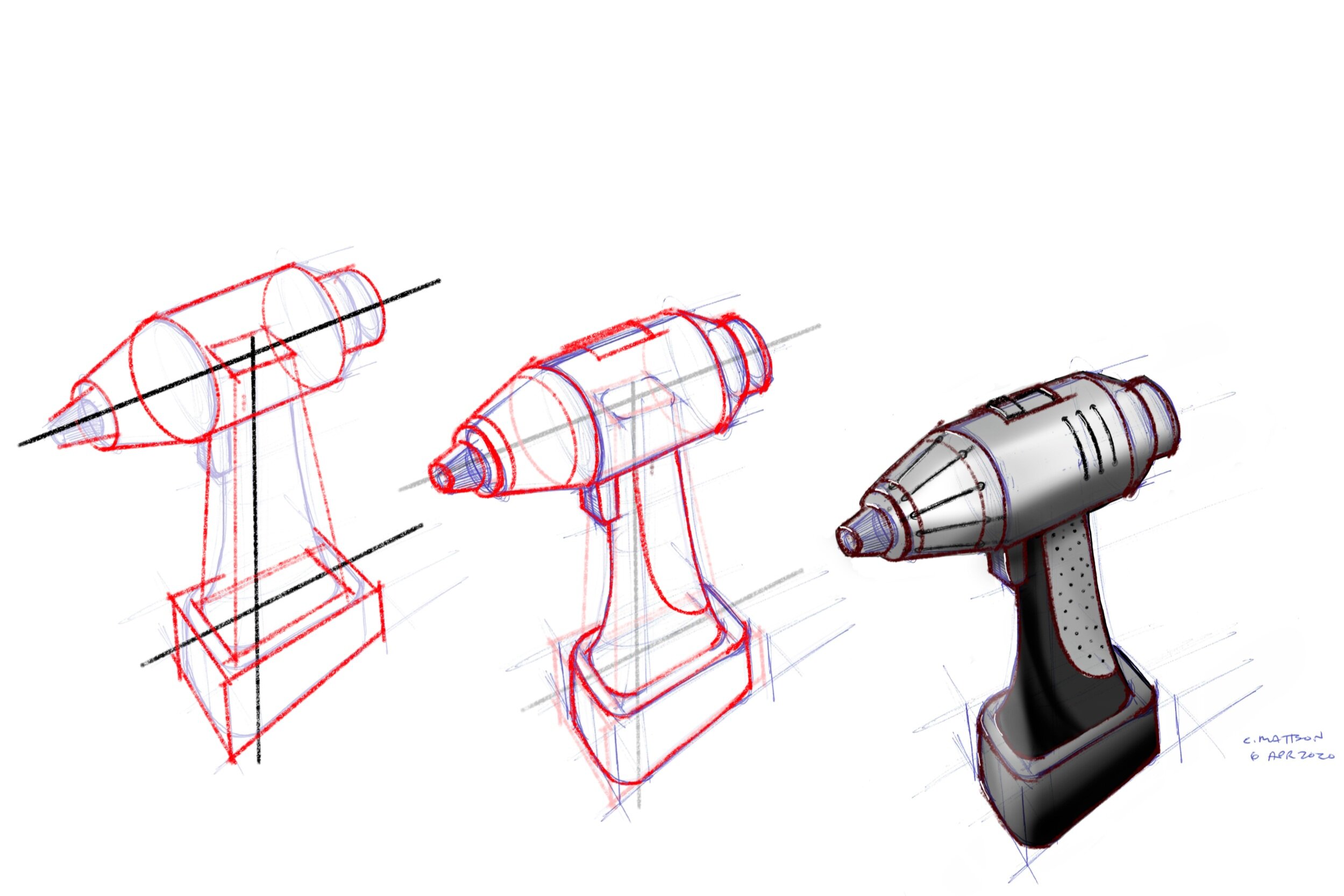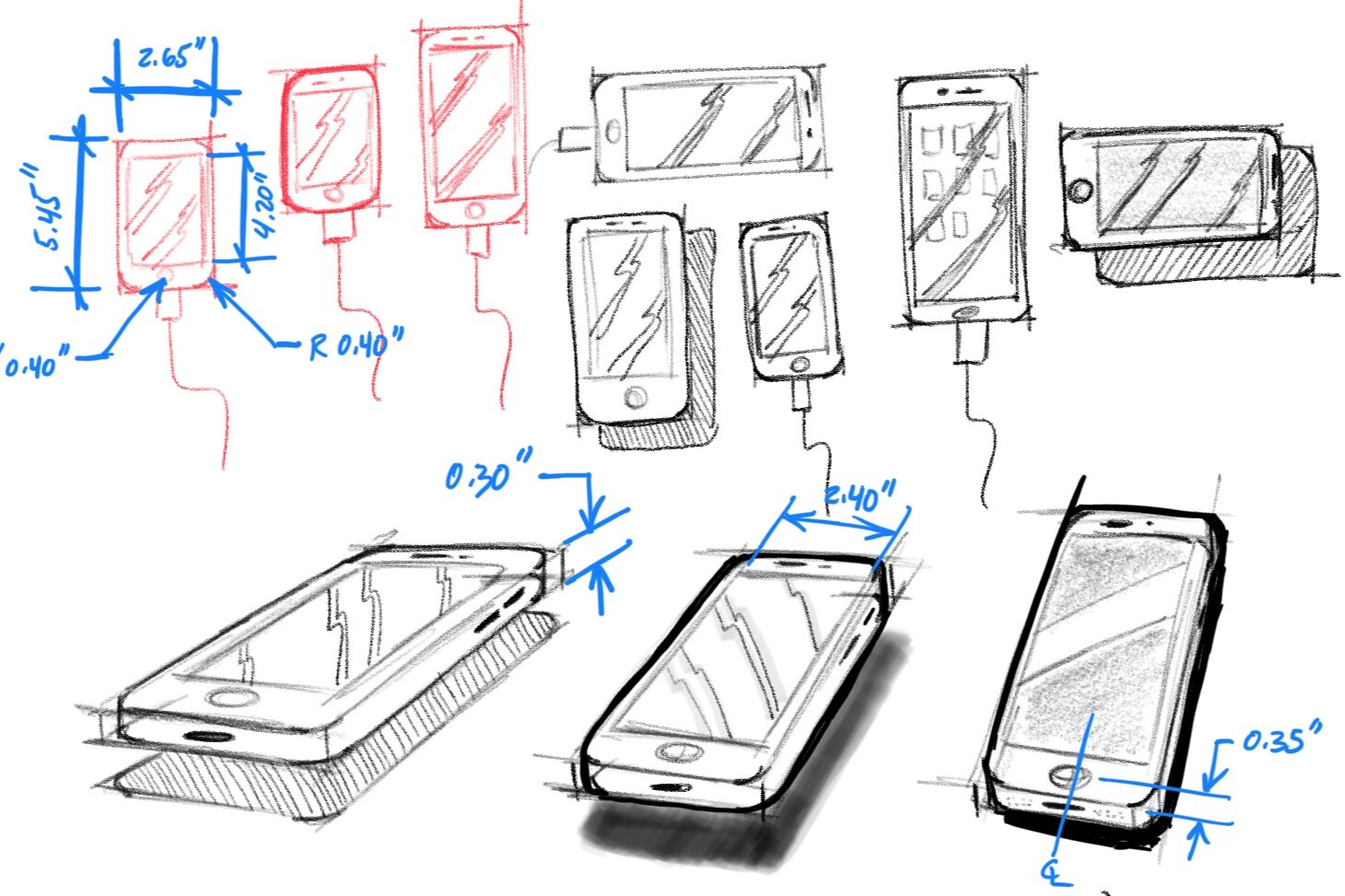Although the knife has been on the market for 10 years, I bought my first one only 3 years ago after seeing a friend rely on his utility knife way more than I relied on mine.
The Third Face of Innovation: The Cross-Pollinator
There are clear benefits of knowing a little about a lot (i.e. breadth) and there are clear advantages of knowing a lot about a little (i.e. depth). Of course, it’s better to know a lot about a lot, but that’s unquestionably difficult to achieve. Cross-Pollinators are generally classified in the former category (breadth) although they often have at least one domain of expertise too.
Learn to Sketch: Part 4
Enhance your sketches with motion arrows, annotations, and dimensions.
3D Printer Filaments: Definitions, Applications, and Tips
Filament is the heart of Fused Deposition Modeling (FDM) 3D printing. The filament is fed into the extruder, heated, and deposited in specific locations layer by layer, eventually giving rise to a functional part that could be used for anything from validating a new design to repairing a Tesla.
Kansei Engineering
Some great ideas come from Japan and Kansei Engineering is one of them. The principles of kansei can make us more sensitive to customers’ emotions and thus more proficient, design engineers.
Sharing your Design Work
Your primary job is to perform good design work, but a close second is to make it easy for other people to understand the work you’ve done. Neither of these is trivial, and neither should be underestimated.
Learn to Sketch: Part 3
As engineers we often need to conceptualize (and sketch) specific geometry such as specific wing shapes, specific gear trains, or a new component that needs to fit in a specific spot on an existing device. In this article, I’ll share a few insights and exercises designed to help you produce sketches of specific geometry, including cross-section sketches, and exploded-view sketches.
Design for the Ordinary
Designing for the ordinary might sound boring but it may be just as important as designing for the extraordinary.
The Library of Babel: From Gibberish to Defined Design
There are an infinite number of possible designs. How can designers choose the right combination of materials, geometries, and processes to achieve the best outcome?
Variety from Vermont and the Valley of Weird
Wildly different ideas, like those coming from Vermont (in the form of Senator Sanders), can be beneficial in designing anything from policies to products even if none of those ideas are ever implemented.
Book Review of "Product Development - Principles and Tools for Creating Desirable and Transferable Designs"
The recently published book “Product Development: Principles and Tools for Creating Desirable and Transferable Designs” is a unique addition to design resources available to students and engineering professionals interested in evolving their design ideas from the early stages of opportunity development all the way through to production.
Learn to Sketch: Part 2
Three new sketching exercises, plus a three-step sketching approach and mathematical rules that when followed produce realistic sketches.
Engineering Laughs
Take a break from all the bad news (and jokes today) and read…. more jokes! Happy April Fools Day!
Global Engineering Engagement During CoVid-19
The entire world is fighting the same problem. You are needed! And so am I. Don’t let your self-perceived lack of expertise, TV, video games, or whatever else keep us from the global engagement the world needs right now.
An Optimistic Perspective on the COVID-19 Pandemic
Can anything good come from the COVID-19 pandemic? This is one optimistic perspective about the potential benefits of COVID-19 (at least eventually) when all of this is over.
Learn to Sketch: Part 1
Learn the basics of product sketching. Even with 10 minutes a day, you will be surprised by the progress you can make. Try it out with part 1 of this learn to sketch series.
Plus ça Change, Plus C'est la Même Chose
In 1848, Jean-Baptiste Alphonse Karr penned the phrase, "plus ça change, plus c'est la même chose" or "the more things change, the more they stay the same". One hundred and seventy-two years later, one could argue that "the more products change, the more the designs stay the same." See how the products of the future are influenced by the designs of the past.
The Human Element of Technical Projects
It was my design versus Eric’s. I was confident though; the engineering analysis favored my design. Plus and I was the project lead, and the choice was mine. What could go wrong?
The Second Face of Innovation: The Experimenter
The second face of innovation as described by Tom Kelley is the Experimenter. It is no surprise that individuals identifying themselves as an Experimenter, will employ testing and prototyping more than any other of the ten faces of innovation. All of us have moments when we act as an Experimenter but some of us might be perennial Experimenters.
A Design Lesson from the Mars Rover Competition
Generating creative solutions to a problem is great—but only if you’re solving the right problems.



















